These Color Changing And Snow Tolerant Succulents Are Perfect For Cold Climates
Sempervivum succulents are a great option when you're looking for colorful, cold-hardy succulents. They even change colors at different times of the year
Sempervivum succulents (also known as “hens and chicks”) are quickly becoming one of my favorite succulent genera. The biggest perk is that they grow in my cold Utah climate! In fact, they're generally more vibrant than other succulents during the winter.
When I first discovered Sempervivum plants, I wasn't a huge fan because I thought the colors were boring–only reds and greens. But, thanks to the amazing selection offered by online succulent sellers, I've found that they actually come in quite a variety of colors, including blues, purples, pinks and even yellow!
As you spend more time with these “hens and chicks,” you'll find that they're really incredible plants. They propagate easily, and they're tolerant of all kinds of problems (over-watering, under-watering, heat cold, etc) that would kill other succulents.
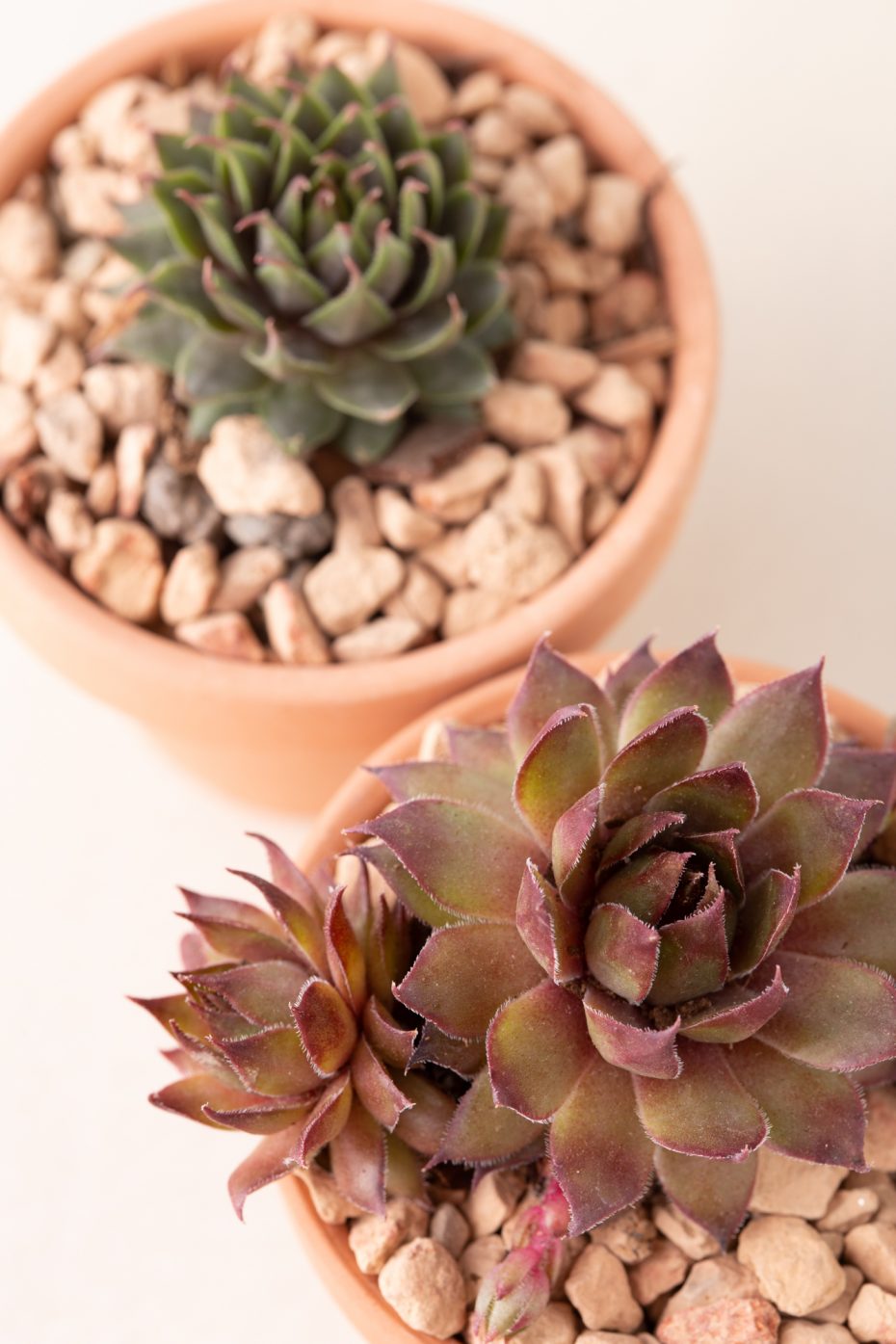
Sempervivum Color Changes
Another interesting aspect of Sempervivum succulents is their coloring. Many of them display some of their boldest colors toward the end of winter, and into early spring. In fact, they can change colors so dramatically that you almost wouldn't recognize two Sempervivum plants as members of the same species!
Don't believe me? Let me show you!
Mountain Crest Gardens sent me a few pairs of Sempervivums plants in various stages of color change. I was amazed at the difference!
I've noticed these changes in my succulents before–but until I compared two of them side-by-side, I had no idea how different they could look.
Each pair of Sempervivum plants was labeled when I received it. However, some of the tags got mixed up as we were potting them, and we had to determine which plants paired together. It was a lot harder than I thought, but in the end we got it right.
Here are a few examples of two Semps of the same species, but in different colors.
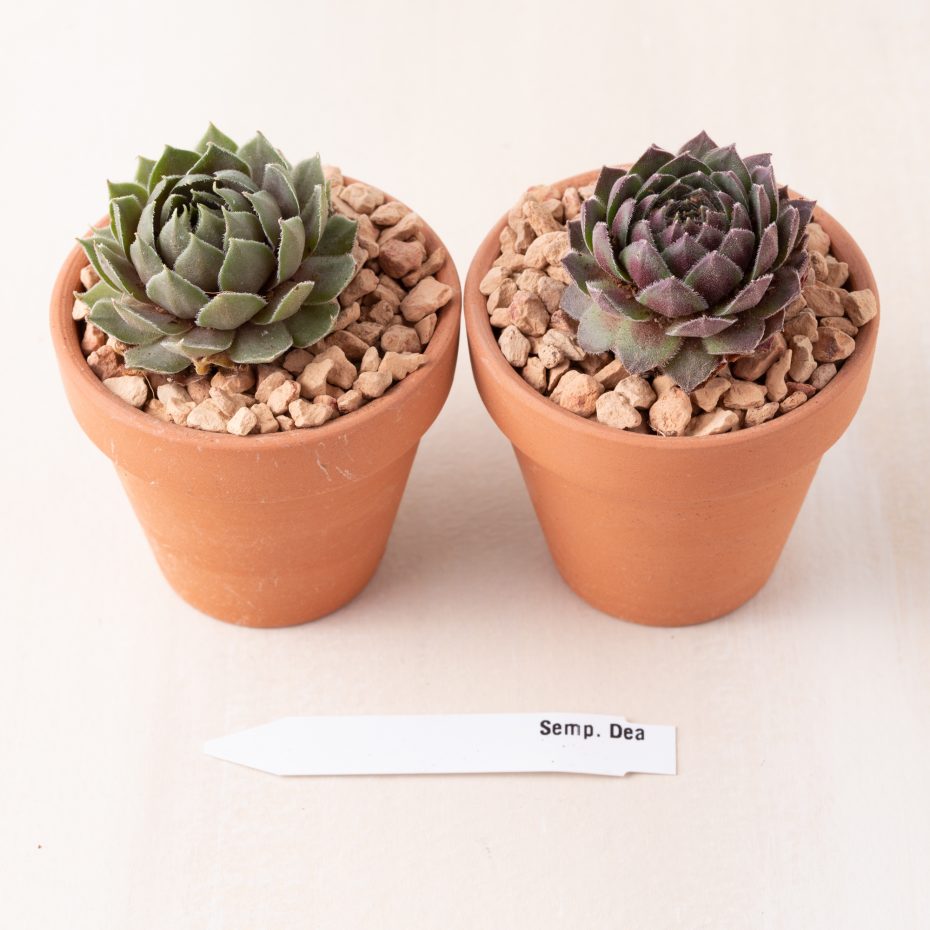
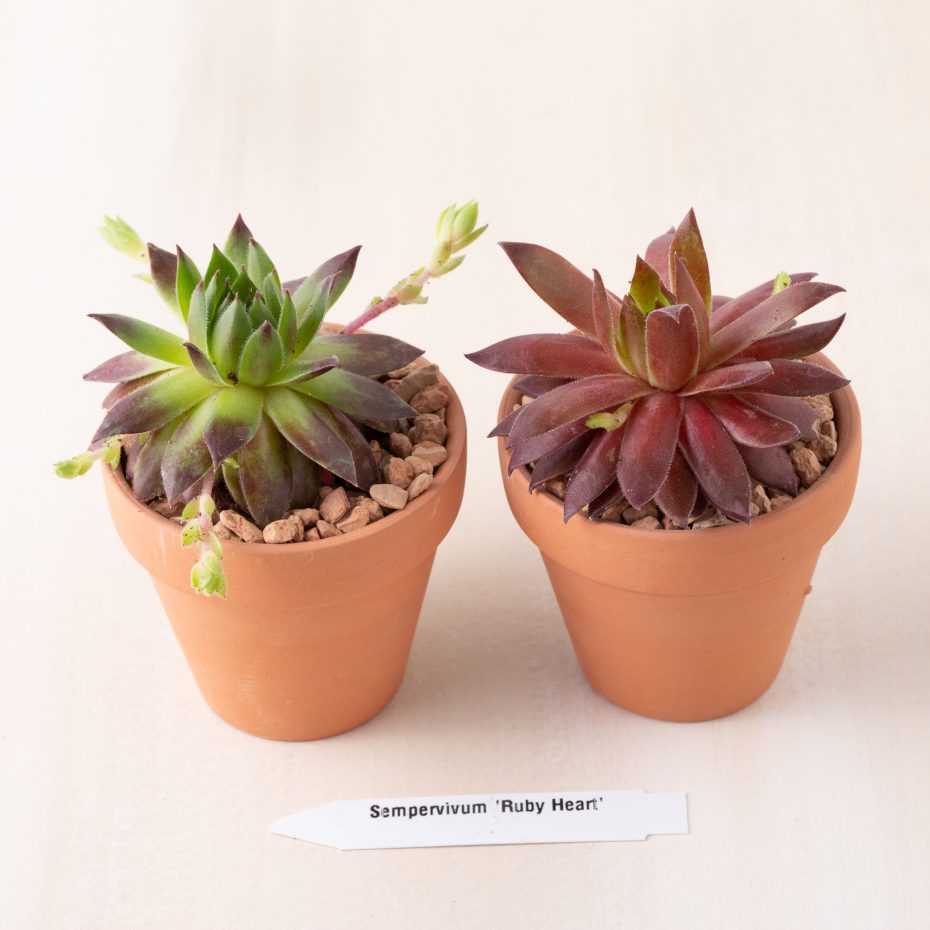
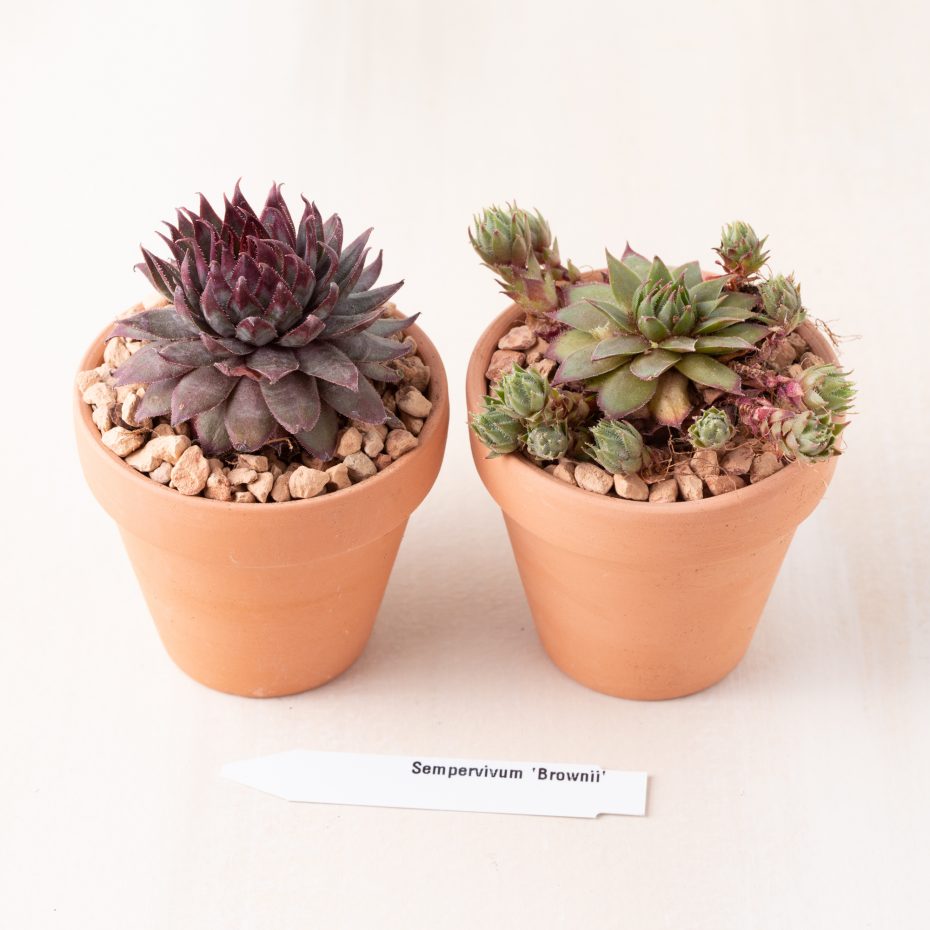
To be totally honest, I've never been great at identifying specific succulent species–but as I worked to match these plants up with the right names, I discovered a few important characteristics to look for when identifying succulents, and Sempervivum plants in particular.
Leaf Shape and Texture
At first glance, all these hens and chicks seem to be the same shape right?
But when you look more closely, you'll notice that some of the leaves are long and skinny while others are wider and less pointed.
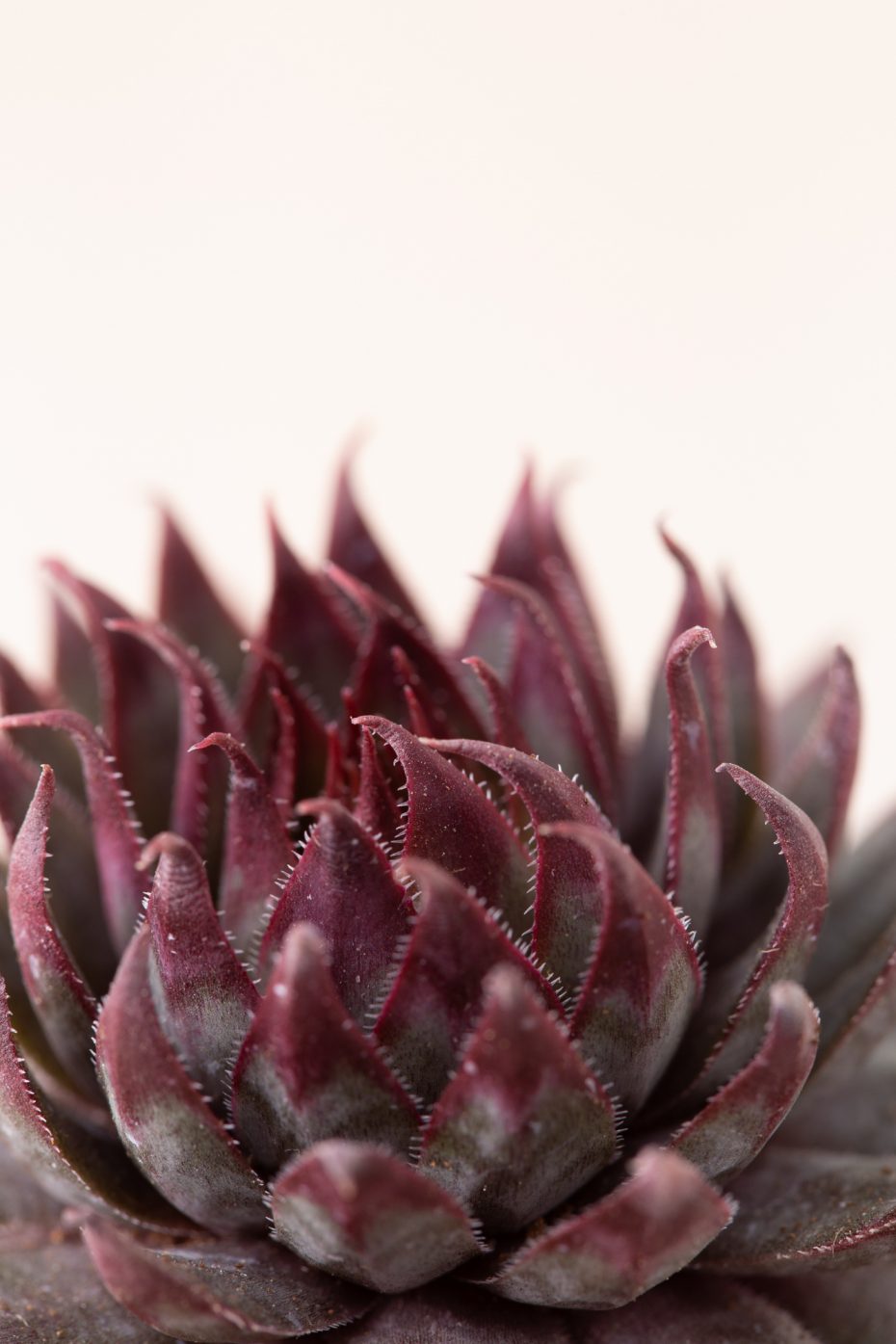
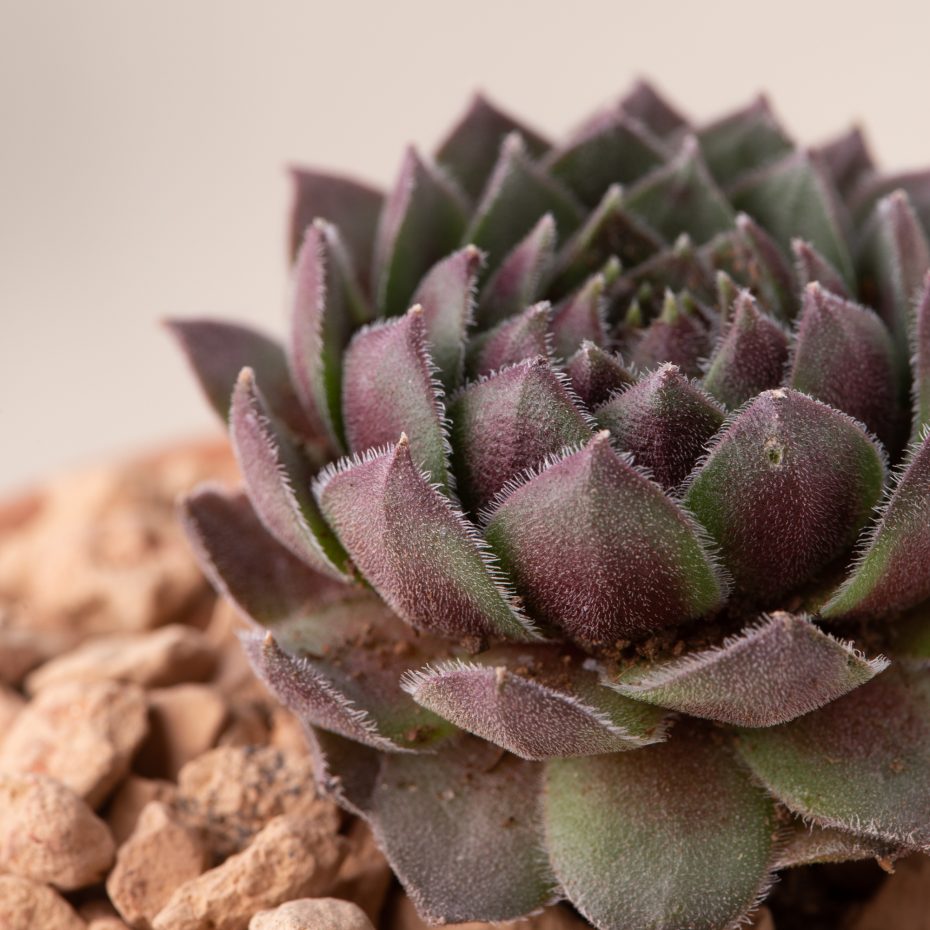
You can also see some differences in the textures on the edges of the leaves. Some look almost furry, while others are smooth. Others look sharp and have small hooks along the edges.
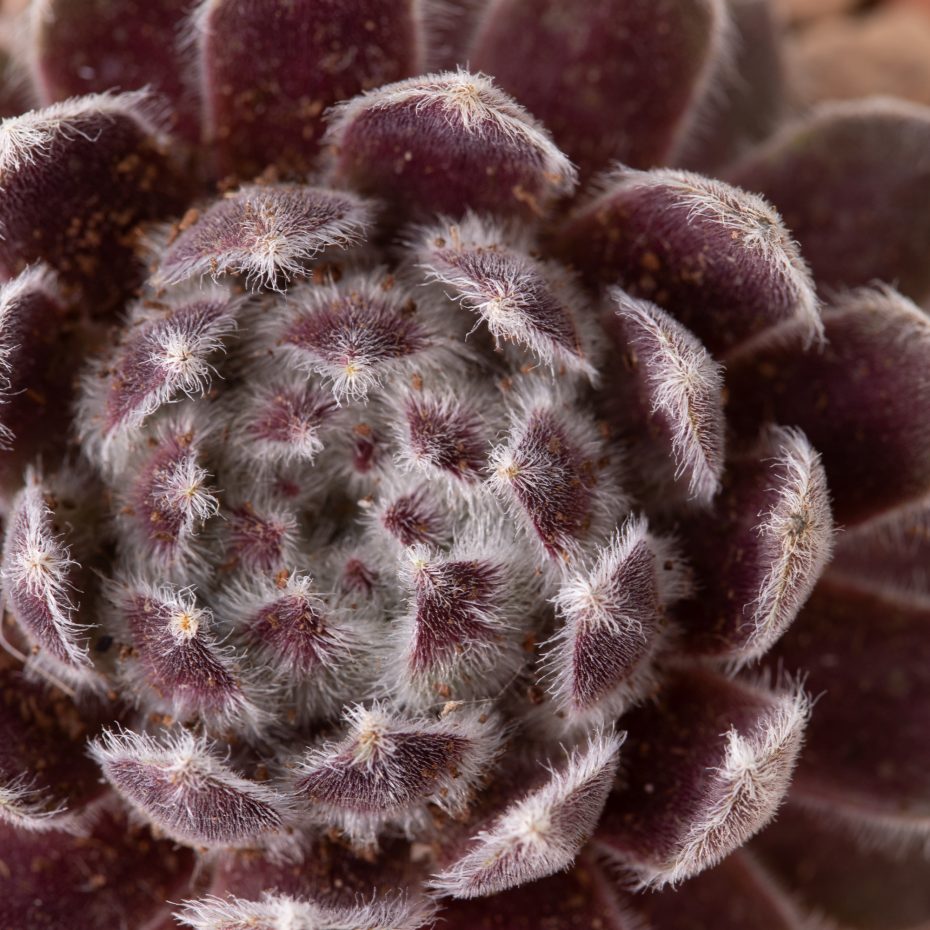
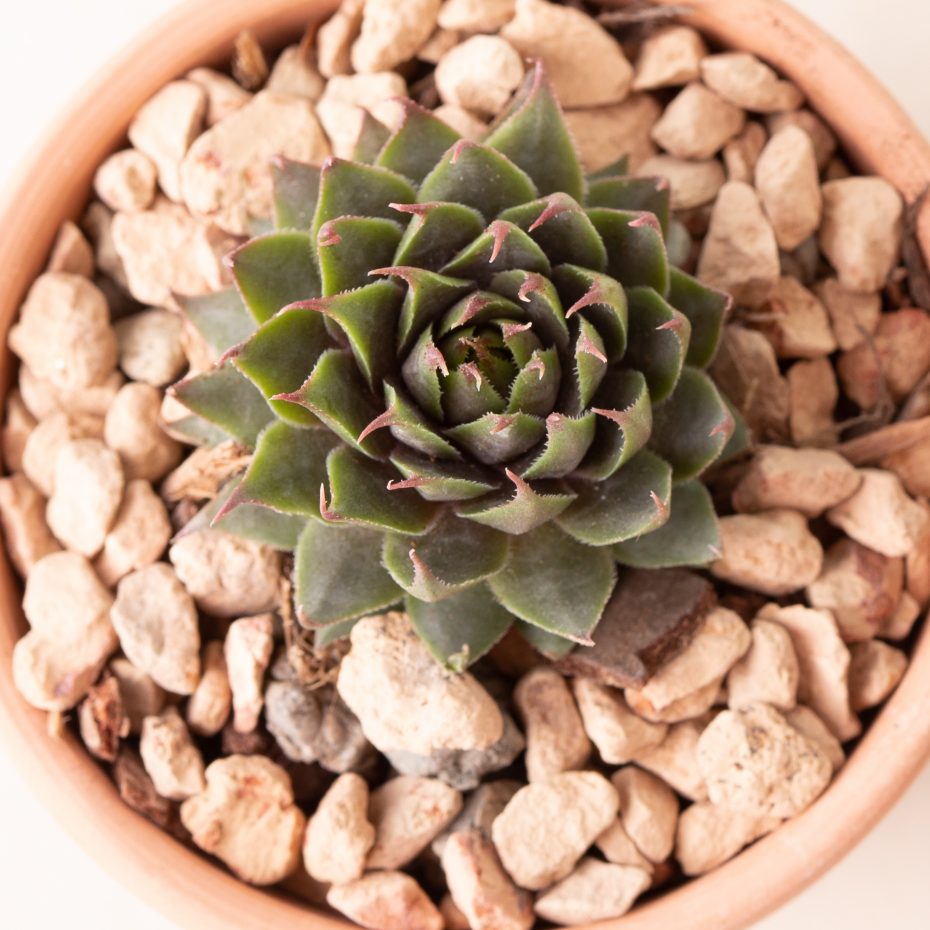
Color Patterns
Different Sempervivum plants also display subtle variations in color patterns. In fact, “hens and chicks” that are in different color stages will follow different patterns in their colors. For example, on this Sempervivum ‘Ruby Heart' you can see some red at the top of the leaf. When a Semp takes on more color, the color simply spreads further down the leaf.
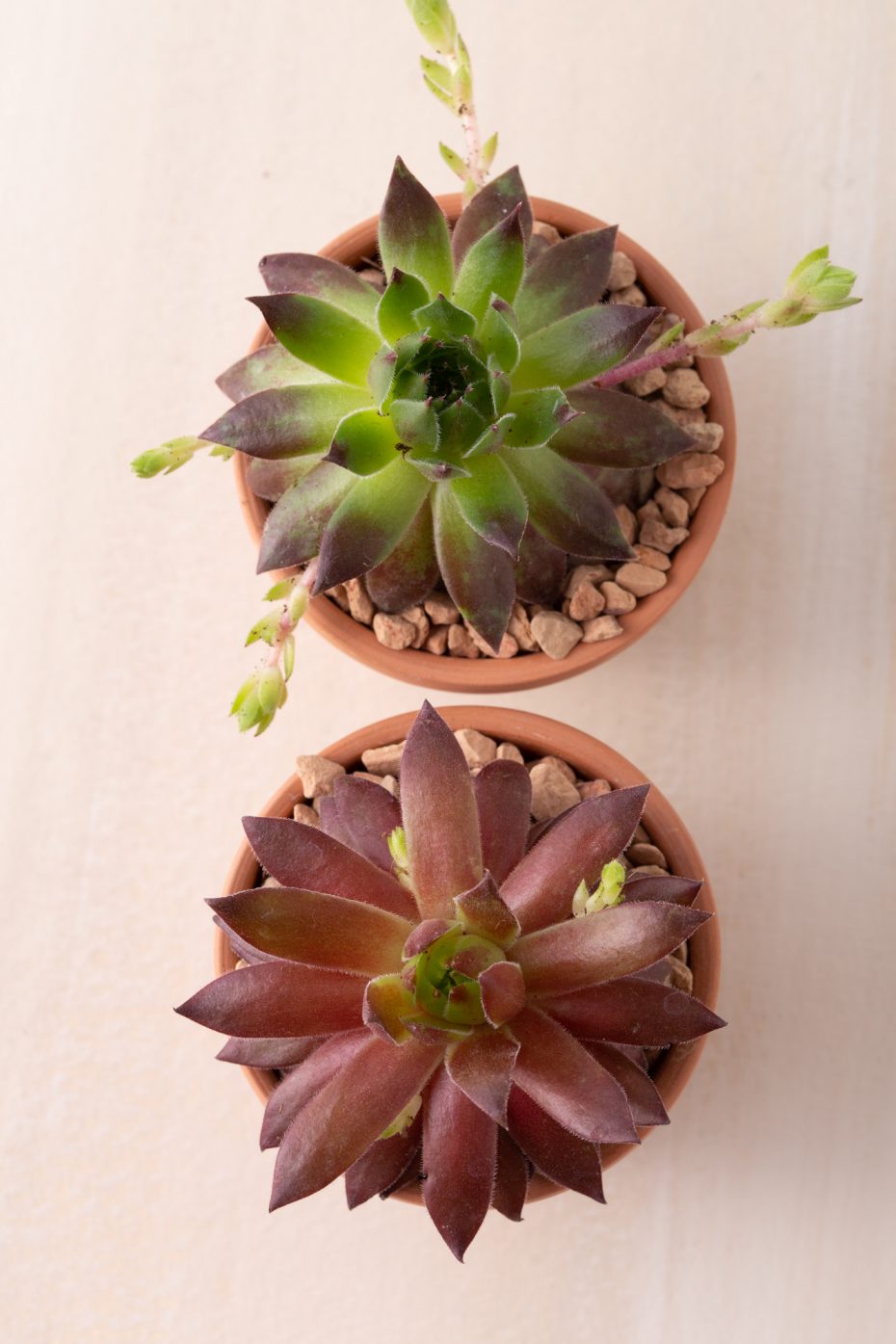
On other Semps, red bands take shape in the middle of the leaf. These bands get larger when the succulent has more red, but they're always in the same location.
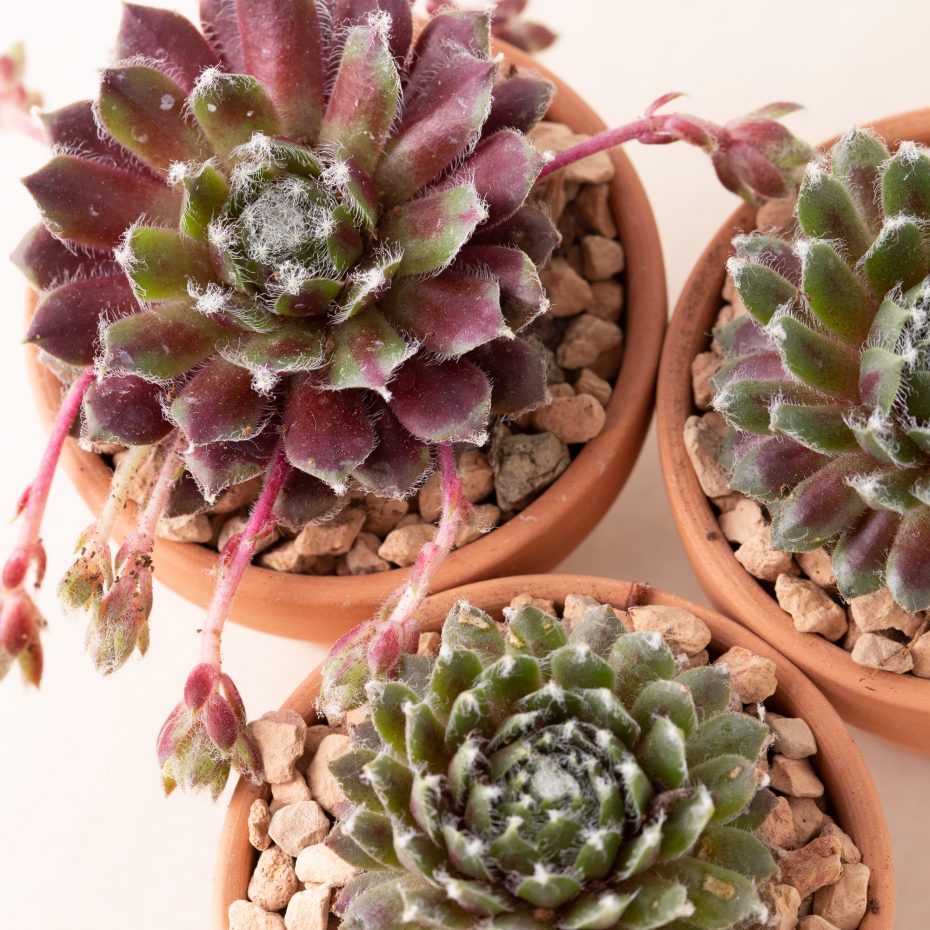
Tightness of the Rosette and Leaf Density
These traits are a bit trickier to notice if your Sempervivum hasn't been getting enough light–but you can typically tell the difference between two different species by the compactness of their leaves.
Some succulents will form loose rosettes, while others will be dense with leaves. You can try gently pulling the leaves apart a little bit to get an idea of how tight the rosette actually is.
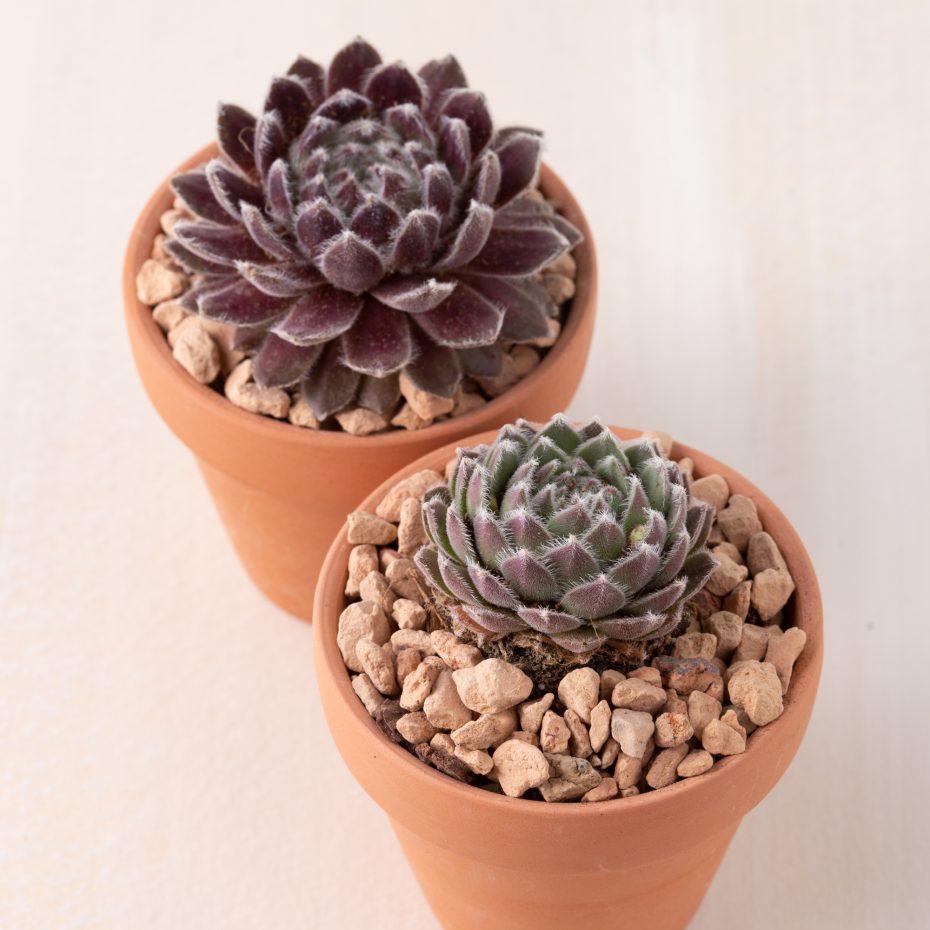
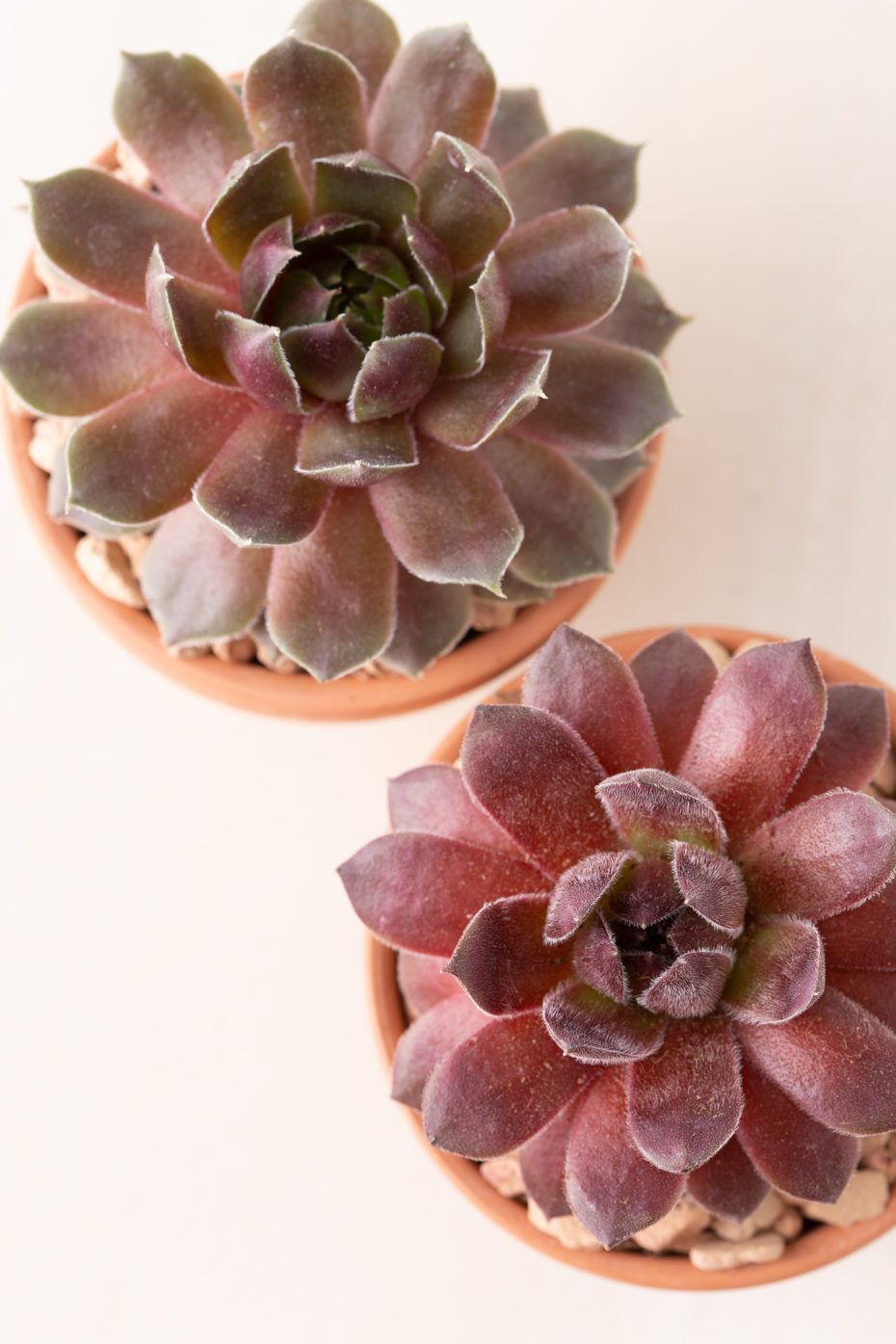
If your “hens and chicks” aren't getting enough light (as sometimes happens in the short days of winter), you'll notice that their leaves start to flatten out. They do this in order to have more area to absorb light.
As you can see, Sempervivums are a really fascinating group of succulents. Since most of the world doesn't offer an ideal climate for tender succulents, Semps provide a perfect option for year-round outdoor growing, no matter what climate you live in.
This article originally appeared on Succulents and Sunshine.